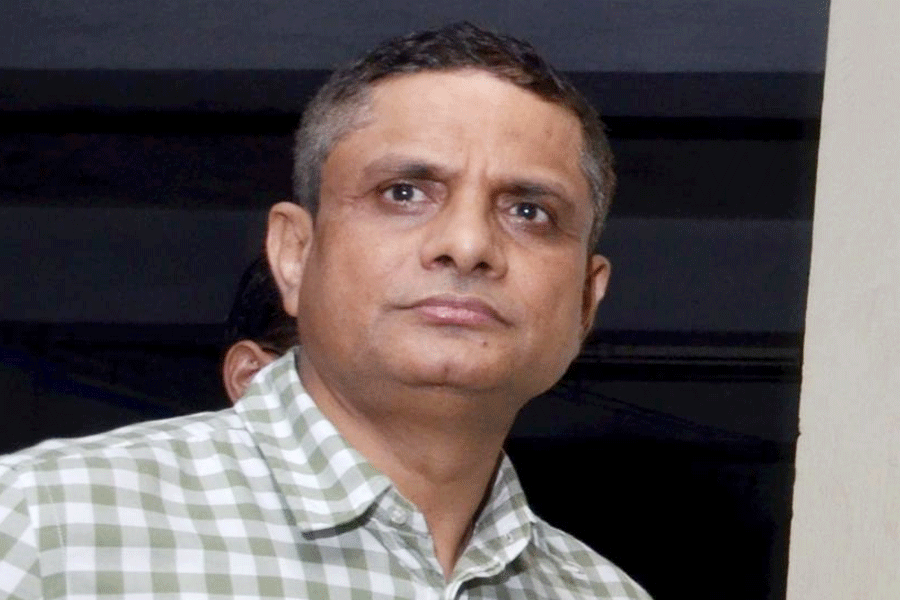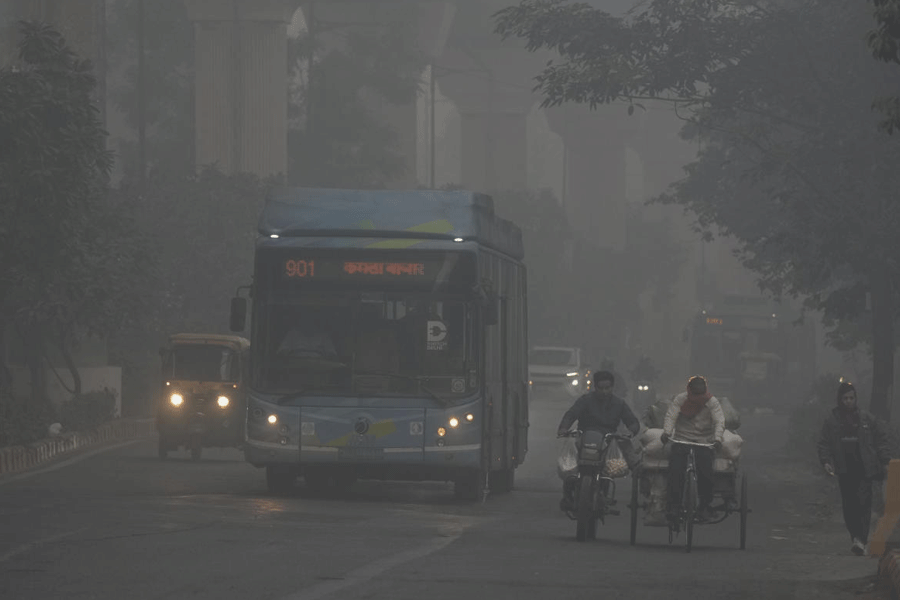A group of men are listening with rapt attention to a white-haired and bearded man in black inside a cramped room in which a huge etching print machine occupies the lion’s share of space.
“The Progressive Group of Bombay had a done wrong thing by attacking Bengal School. Sadly, there is not much of a tradition of recording history in our country,” says the man, who seems to command much respect, in heavily accented Bengali, interspersed with English.
A notice outside the entrance reads: Society of Contemporary Artists. The red building at 157B Lenin Sarani is one of those ramshackle old structures that abound in this city, and seem to have survived by sheer chance. It is Sunday evening, and the only people outside the room is a camera crew that had just finished shooting their adda. The street is practically empty.
The man in sable is Manu Parekh, 80, who is based in Delhi now, but, since 1965, spent 10 of his formative years as an artist in Calcutta, when this city was, true to its sobriquet, India’s cultural capital. The Society was formed in 1960, and Parekh has been its member ever since he started living here, regularly participating in all its exhibitions till now. Those who joined the adda are younger members of the Society like Aditya Basak, Atin Basak, Manoj Datta, sculptor Sunil K. Das, Pradip Maitra and Srikanta Paul, who kept himself busy recording the conversation with his mobile phone.
Soumitra Chatterjee, who is senior to Parekh by a couple of years, is directing the film which will be shot on the banks of the Hooghly in Bally, Howrah, Benaras, which made a lasting impact on Parekh’s imagination and thinking as an artist, Mumbai, where he was trained at the JJ School of Arts, and his studio in Delhi.
Jyotirmoy Bhattacharya, who has curated exhibitions of the works of Jogen Chowdhury, Shuvaprasanna, Akbar Padamsee, Lalu Prasad Shaw and Soumitra Chatterjee, and has made films on Himmat Shah and Rabin Mondal, has conceptualised the project. Bhattacharya says: “My aim is to make a film that would be accessible to all, and would try to record the lives of artists and their struggle before they reached a position of eminence.” He had accompanied Parekh when the artist visited most of the museums in Switzerland where the works of Paul Klee are displayed and got to know him well. Parekh admires Klee. Prasant Tulsiyan is producing the film.
Earlier in the day, the team was shooting at the Garia home of printmaker Atin Basak, where Chatterjee was holding a conversation with Parekh. On the walls are two half-finished canvases. On a table are pots of paint. From time to time, Parekh dabs paint on the canvases with his brushes.
Chatterjee says he had earlier made some shorts and telefilms, in which he acted. “I have known Manu Parekh for the past five to 10 years. He had organised my exhibitions in Ahmedabad and Baroda. I am focusing on his inner life. I am trying to persuade him to articulate his thoughts. Benaras is on the banks of the Ganga. It is an eternal city, however crowded it may be,” says Chatterjee. But the actor will not be able to accompany them there, although the shoot will follow plans he has laid out. He will edit the film as well.
Parekh says: “When I arrived in Calcutta I was only 25. And I was here up to 35. I was working at Weavers’ Centre in Ahmedabad and had been transferred to Calcutta. My wife Madhvi was with me and so was my daughter who was a year and a half. We lived on Jatin Das Road. The first artist I became friends with was Shyamal Datta Roy, and within six months, I became a member of the Society of Contemporary Artists.
“I made many friends here —Ganesh Pyne, Bikash Bhattacharjee, Lalu Prasad Shaw, Sunil Das, Ganesh Haloi and the poet Shakti Chattopadhyay. I came from Bombay, a city for successful people. Calcutta was for strugglers like myself in those days. You can meet people easily here. For one week I stayed in Howrah at the home of a Bengali friend whom I had met in Ahmedabad, and who spoke Gujarati. From there, I would travel all the way to a tea shop named Sutripti in Deshapriya Park. I met cinema people too like Subrata Mitra, who, few know, could paint well, and Bansi Chandragupta.
“I started learning etching under Shyamal Datta Roy. We were all poor. We could not buy paint. But we looked forward to the two annual shows where graphics and drawings were exhibited. It was so exciting.
“My paintings acquired an organic quality in Calcutta. I became interested in faith --- the faces of powerful women like the ones of Durga. I have worked for 12 years in the villages of Odisha, Bihar and Rajasthan mainly. My paintings are about fertility too.”
The shooting will be over in about eight days. End of May is the targeted time of release.










